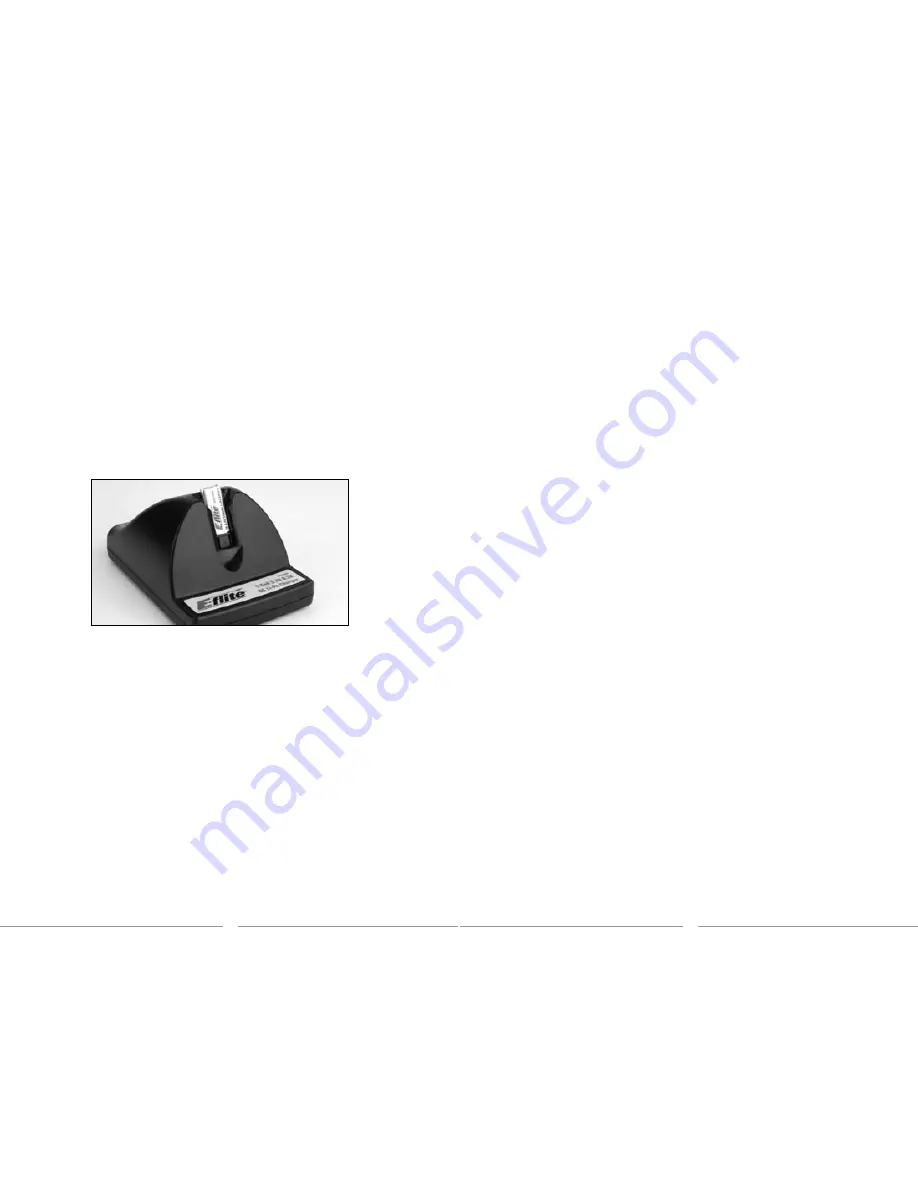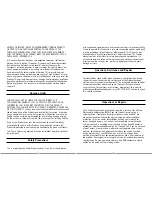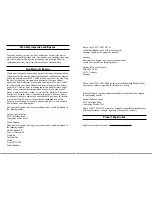
LiPo cells should not be discharged to less than 3V each under load.
In the case of the 1S LiPo battery used for the Blade
®
mCX, you will
not want to allow the battery to fall to below 3V during flight.
The Blade mCX’s 5-in-1 control unit features a soft low voltage
cutoff (LVC) that occurs when the battery reaches 3V under load.
When the soft cutoff occurs, the ESCs of the 5-in-1 unit will reduce
power to the motors (regardless of the power level you have set with
the throttle stick) in order to prevent the voltage of the battery from
dropping below 3V. This reduction in power usually requires that
you land the model immediately, at which point you should power
down the model and unplug the flight battery.
And while it is possible to power the model up and to fly again
after the soft LVC occurs, this is NOT recommended as continued
discharging to the soft LVC will cause permanent damage to the
LiPo battery that results in lost power and duration when using
the battery for subsequent fights, or failure of the battery entirely.
Continued attempts to further discharge the battery may also result
in loss of control while the motors are running as the voltage of
the battery may drop below the minimum operating voltage of the
receiver and other electronics.
Also, it is not recommended that you fly to the soft LVC every
time you fly. Instead, you should be aware of the power level of
the battery/helicopter throughout the flight, and if at any time the
helicopter begins to require more throttle than typical to maintain
hover or flight, you should land the helicopter immediately.
Routinely discharging the battery to the soft LVC can still cause
permanent damage to the battery.
Note: When the battery power/voltage is getting low you will typically find
that significant rudder trim and/or rudder stick adjustments are needed
to prevent the helicopter from spinning. This usually occurs before soft
LVC, and indicates a good time to stop flying.
If you have any further questions or concerns regarding the handling,
charging and/or use of the included LiPo battery pack, please contact the
Horizon Support Team at 877-504-0233.
unused condition to the place of purchase immediately.
• You must charge the included 1S 3.7V 110mAh LiPo battery in a safe
area away from flammable materials.
• Never charge the battery unattended. When charging the battery you
should always remain in constant observation to monitor the charging
process and react to potential problems that may occur.
• After flight, the battery must be cooled to ambient temperature before
charging.
• You MUST use the included 1S 3.7V DC LiPo Charger (EFLC1003)
ONLY. Failure to do so may result in a fire causing personal injury
and/or property damage. DO NOT use a NiCd or NiMH charger.
• If at any time during the charge or discharge process the battery
begins to balloon or swell, discontinue charging or discharging
immediately. Quickly and safely disconnect the battery, then place
it in a safe, open area away from flammable materials to observe
it for at least 15 minutes. Continuing to charge or discharge a
battery that has begun to balloon or swell can result in a fire. A
battery that has ballooned or swollen even a small amount must
be removed from service completely.
• Store the battery at room temperature in a dry area for best results.
• When transporting or temporarily storing the battery, the temperature
range should be from 40–120 degrees Fahrenheit. Do not store the
battery or model in a car or direct sunlight whenever possible. If stored in
a hot car, the battery can be damaged or even catch fire.
• Do not over-discharge the LiPo flight battery. Discharging the
battery too low can cause damage to the battery resulting in
reduced power, duration or failure of the battery entirely.
8
9
Summary of Contents for EFLH2200
Page 19: ......





































